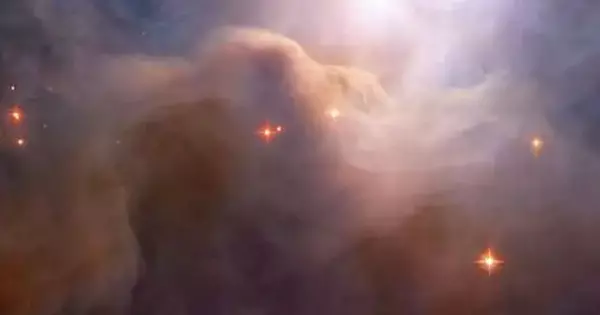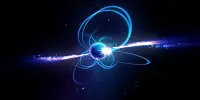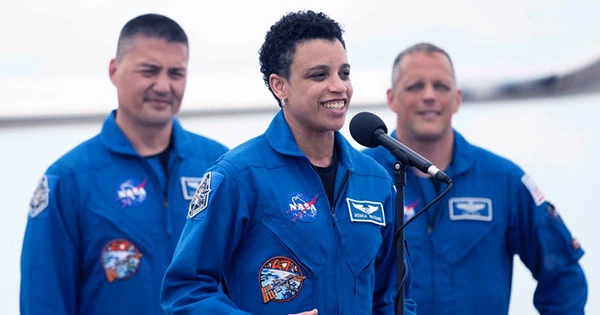Open the windows and get out the feather duster, because spring has arrived and it’s time to clean! Fortunately, no one has to clean up the dust in space, because there is a lot of it — approximately 100 tons of dust fall on Earth alone every day! And there’s even more swirling around our solar system, our Milky Way galaxy, other galaxies, and the intergalactic space between.
CB 130-3, a small, dense cloud of gas and dust, blots out the center of this Hubble Space Telescope image. CB 130-3 is a dense core, which is a compact agglomeration of gas and dust. This dense core is located in the constellation Serpens and appears to billow across a field of background stars.
Astronomers are particularly interested in dense cores like CB 130-3 because they are the birthplaces of stars. During the collapse of these cores, enough mass can accumulate in one location to reach the temperatures and densities required to ignite hydrogen fusion, resulting in the birth of a new star. While it may not be obvious from this image, a compact object on the verge of becoming a star is embedded deep within CB 130-3.
CB 130-3, a small, dense cloud of gas and dust, blots out the center of this Hubble Space Telescope image. CB 130-3 is a dense core, which is a compact agglomeration of gas and dust. This dense core is located in the constellation Serpens and appears to billow across a field of background stars.
Astronomers used Hubble’s Wide Field Camera 3 to better understand the environment surrounding this newborn star. As this image shows, the density of CB 130-3 varies; the cloud’s outer edges are only tenuous wisps, whereas at its core, CB 130-3 completely blocks out background light.
The gas and dust that make up CB 130-3 affect not only the brightness but also the apparent color of background stars, with stars closer to the cloud’s center appearing redder than their counterparts on the outskirts of this image. Hubble was used by astronomers to measure this reddening effect and chart the density of CB 130-3, providing insights into the inner structure of this stellar nursery.

Initially, astronomers thought dust was a hindrance to seeing the objects it surrounded. Dust scatters and absorbs light from stars, emitting heat as infrared light. When we started using infrared telescopes, we realized how important dust is in the universe and how beautiful it can be. The image of the Andromeda galaxy above was taken in the infrared by our Spitzer Space Telescope and shows detailed dust spirals that are not visible in optical images.
And some space dust that can be seen from Earth! In the spring and autumn, just before or after sunrise or sunset, you might catch a glimpse of a hazy cone of light above the horizon caused by dust in the inner solar system. An example can be seen in the image above, which extends from above the tree on the horizon to a spectacular view of the Milky Way. This is known as zodiacal light, and the dust that is reflecting the sunlight is most likely from icy comets. The same dusty disk that formed our planets and eventually you and the dust under your couch created those comets!















